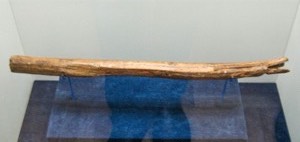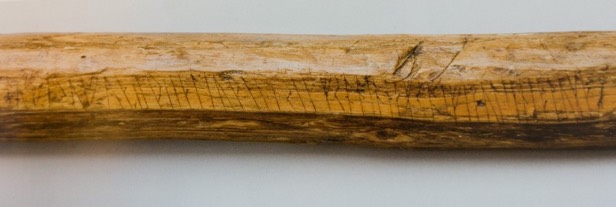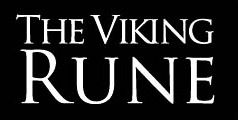 Recently I blogged about the Younger Futhark runes as a writing system, emphasizing insufficiency of only 16 runic symbols for 21 consonants and 38 vowels of the Old Norse language between the 9th and 12th centuries. The 16 runes of the Younger Futhark are about three times less than one would expect. Anglo-Saxons invented additional runes for the standard Elder Futhark set of 24 runes when the language changed and additional phonemes emerged. Scandinavians did to the contrary. It is not clear why. What is clear is that Younger Futhark runes create a whole lot of problems for those who try to read them.
Recently I blogged about the Younger Futhark runes as a writing system, emphasizing insufficiency of only 16 runic symbols for 21 consonants and 38 vowels of the Old Norse language between the 9th and 12th centuries. The 16 runes of the Younger Futhark are about three times less than one would expect. Anglo-Saxons invented additional runes for the standard Elder Futhark set of 24 runes when the language changed and additional phonemes emerged. Scandinavians did to the contrary. It is not clear why. What is clear is that Younger Futhark runes create a whole lot of problems for those who try to read them.
A great example of it is the runic inscription from Staraya Ladoga (mentioned as Aldeigjuborg in the sagas) in northwestern Russia. The fir tree stick was discovered on September 2, 1950 in the archaeological horizon Е2 dated to the period between 840-865 AD. It is preserved in the State Hermitage Museum in St Petersburg, Russia, with the inventory number 10 ЛС 1969. I have seen it and took several photos of it in December 2012, on an exhibition in Moscow.
It is 42 cm long. Its surface is formed by long facets. One of the facets has a lengthy runic inscription in Short Twig Younger Futhark runes. There are no separators between words. Even though the signs are clearly cut, researchers are not sure about some of the runes.

To say the least, it is bewildering how many readings of the Staraya Ladoga inscription have been suggested and how far from each other they are.
1. Vladimir Admoni, Tamara Silman, 1957 (second half of the inscription only):
frąn mąnafr (fr)ąt fibul si nibluka
fránn mánaálfr, fránt fífl, sé niflunga
Shining moon alf, shining monster, be in the realm of Niflungs
2. Gerd Høst, 1960:
ufir uf uaRiþR hati ualtR rims frąnmąna krąt fibulsini bluka
yfir of variðr hati valdr (h)ríms fránmána grand fimbulsinni plóga
Above, clad in his cowl the Master of the Hoar-frost, the Damage of the shining moon, the mighty journey of the plough-oxen
3. Wolfgang Krause, 1960:
(t)u (u)fir uf uaRiþR hali ualtR rias frąn mąna krąt fibul sin i bluka
(d)ó yfir of variðr halli valdr (h)ræs fránn, manna grand, fimbul sinn i plóga
Died high clad in the stone owner of the corpse, shining, ruiner of men, in the enormous way of the plough
4. Vilhelm Kiil, 1964:
s ufi uf uaRiþR hali ualiR rims frąn mąnakrąt fibulsini bluka
(e)s úfi of variðr hali vélir rims frán(n) mannagrant fimbulsinni plóga
The tail is dressed in plumage, the sharp tip is attracting booty in a great number for all
5. Ottar Grønvik, 2004:
(hel)t ufir of uaRiþR hali ualaR riifs frąn mąna krąt fibul sini bluka
(helt) yfir of vaRiþR halle vallaR rífs frąn manna grænd fimbulþsinni plóga
… (and) steered – surrounded by the slope – down to the fertile pastureground – across the valiant men’s neigbourhood a great following of plows
6. Jurij Kusmenko, 2015:
? ufir uf uaRiþR hali ualtR rils frąnmąn a krąt fibulsin(i) (ni)bluk a
yfir of variðr hali veltr hræls fránman á grannt fimbulsin(ni) (N)eflaug (or Iflaug) á
The above dressed spindle is rotating. The flashing girl of the “reel” will have a fine long thread. Neflaug (or Iflaug) possesses (this distaff)
It’s a great illustration of the simple truth: even if you are fluent in Old Norse, it does not mean you can read Viking Age runic inscriptions like a local newspaper, between a cup of coffee and a cigarette.

Given that it’s poetry I’d put money down that the artist was a smug prick who wanted his poetry to have multiple valid readings to appear more clever than he actually is.
Because every society has poets who think puns are a deep and meaningful expression of how clever they are.
Perhaps the most rewarding exercise would be to have got all these ‘experts’ together in one room, and record the argument.
The gobsmacking disparity in translations by genuine scholars is actually quite heartening. It means that anybody can take a stab at generating an interpretation, although perhaps more as a meditative exercise than an effort towards an authoritative translation.
Jonathan, I think anybody couldn’t do that. May be anyone as competent in Old Norse as the scholars above, but that’s a different thing.
one must remember that the first runes were not letters at all. they were secret symbols and magickal signs. the Elder Futhark has been said to represent the 24 gods and goddesses of the Æsir, Asnynir, and Vanir. it was changed to the meanings we know now by the runemasters after the Catholic Church issued an edict outlawing the use of the runes in the 12th Century and then again in the 14th
I don’t think so, Phil.
What is/are the source(s) of your information relating to the Elder Futhark representing the ’24 gods & goddesses’?
This is a new one on me.
Who has said what you claim? What/who are the sources of their claims?
Your spelling of magical as ‘magickal’ suggests a ‘new age’ occultist source.
#1:
The Rúnatal & The Ljódatal do not mention any specific symbols. In fact, The Ljódatal refers to ‘songs’ (i.e. ‘vocalised spells/incantations’).
So, inadvertently, you have got that partly right.
But then you contradict yourself with your 24 deities claim.
The word ‘rune’ indicates ‘secret/charm/spell’, and does NOT indicate the Futhark(s). It’s actually an unfortunate conventional misnomer to refer to the letters of the Futhark as ‘runes’.
The names of the ‘runes’ come from the Rune Poems, which are mnemonic verses.
#2:
The edicts you refer to relate to the use of sorcery/cursing/etc., and were not necessarily from the Roman Catholic Church. The pre-Christian Norse had taboos against sorcery, finding it rather distasteful. They did not like witchcraft either.
If anything, beyond law and lore/tradition, there was no unifying common ‘religion’ in ancient Norse society. There was no Norse ‘bible’, no ‘Book of Common Prayer’.
There is NO basis in the claims of ‘tradition’ made by those who have invented ‘Old’ religions, let alone ‘runic tantra’. Why do all the rituals seem (like Wicca) to be travesties of Christian ritual (And why do the high priests always seem to dress like Christian monks!)?
#3:
Your claim that the meanings of the ‘runes’ were changed by the ‘rune masters’ is in itself an admission that they themselves were making it up as they went along.
But this a new one on me.
_
The problem with the occultists’ approach is that they extrapolate falsely, taking the bits they like and embellishing them according to their respective agendas, even using the Tarot or the I-Ching to discover the ‘meanings’ of the ‘runes’!
1+1 does not equal 11!
The sources are available, in many excellent translations.
I refer you to them.
Remember: do not climb a tree that has no roots.
I love the rune magic…
So do I.